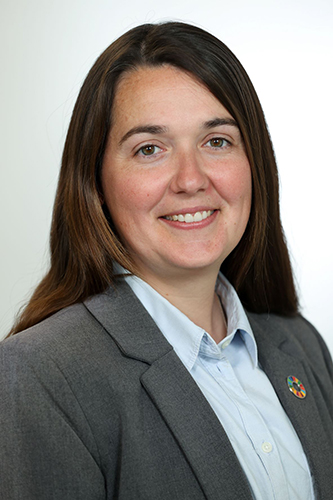The Irish Green Building Council has called for interested building services engineers to join a Community of Practice for Engineers to gather data on the embodied carbon of products being supplied for building services.
A lack of environmental product declarations (EPDs) for building services equipment means gathering information on embodied carbon for this equipment in Ireland is difficult. Currently, the calculation methodology CIBSE TM65 appears to be the best route to gather consistent embodied carbon information for building services, and the Irish Green Building Council (IGBC) uses this method. However, to address the shortfall in consistent and reliable data, the IGBC has established a Community of Practice for M&E Engineers with the intention of getting members to get suppliers to provide data on their products in line with TM65. This would further the goal of building a consistent shared body of knowledge.
Building services equipment EPDS
Müge Karasahin, Director of Sustainability, Ethos Engineering and Chair of the Community of Practice for M&E Engineers, says that sustainability is at the core what Ethos Engineering’s operations, and like many other firms, Ethos is always looking for ways to reduce carbon in projects, but a lack of good embodied carbon data on engineering equipment makes this very challenging.
“As an engineering company, sustainability is high on the Ethos Engineering agenda. We are always looking for ways to reduce carbon in the built environment – operational and embodied,” Müge Karasahin explains. “We saw a lack of data on the embodied carbon of M&E equipment, and we wanted to address this.
“Initially, we considered reaching out to a few M&E practices ourselves to see if any would be interested in collaborating to find solutions. However, we thought it would be better to contact the IGBC, as it is working to develop a better national understanding of whole-life carbon.”
Barriers to building services equipment EPDS
Müge Karasahin says that the main barrier to getting necessary data is the absence of specific EPDs for services equipment. “Without EPDs, it is difficult to access reliable and consistent data on the embodied carbon emissions associated with products, she explains.
“EPDs evaluate the environmental impact of a product from raw material extraction to disposal. The absence of EPDs means the embodied carbon assessment may be incomplete, as it might overlook certain stages or components of the product’s life cycle.” EPDs use standardised methodologies and metrics. This enables comparison between different products. Without this information, knowing which product is better (less embodied carbon, less environmental impact) than the others is impossible. Therefore it is not possible to make informed decisions to reduce embodied carbon.
Building services equipment EPDs Community of Practice objectives
The objective of the Community of Practice is first to standardise how M&E embodied-carbon studies are carried out in Ireland. Producing a standard way of requesting manufacturer information will increase the M&E product data pool.
Müge Karasahin adds, “We would like to identify the most commonly specified equipment and what data in the form of EPDs already exists.”
Building services equipment to be covered
The systems to be covered by the Community of Practice for M&E Engineers include:
- In-built lighting systems (Light fittings, control systems and sensors)
- Energy systems (Heating plant and distribution, cooling plant and distribution, electricity generation and distribution)
- Ventilation systems (Air handling units, ductwork and distribution)
- Sanitary systems (Cold and hot water distribution, water treatment systems, drainage system)
- Other systems (Lifts and escalators, firefighting installations, communication and security, installations, telecoms and data installations)
- B1 Refrigerants (Refrigerants).
Who should get involved?
The Community of Practice for M&E Engineers will comprise anyone with an interest in this area who feels they may have something to contribute or learn. The group will meet quarterly to share information and case studies, ask questions, and invite companies addressing the embodied CO2 problem to present and share their knowledge to disseminate it throughout the industry.
Müge Karasahin explains that whole-life carbon is currently not regulated in Ireland.
“From an EU level, several countries have already regulated or are in the process of regulating whole-life carbon. For example, in the UK, Part Z, an industry-proposed amendment to UK Building Regulations 2010, is published. This outlines requirements for assessing whole-life carbon emissions and limiting embodied carbon emissions for all major building projects.
“We need to catch up. Developing a supportive regulatory environment for embodied carbon is one of the steps in IGBC’s ‘Roadmap to decarbonise Ireland’s built environment across its whole life cycle’. The community of practice will support IGBC’s efforts; if we work together as an engineering community, this work will be done faster and more efficiently,” she concludes.
If you are interested in learning more or joining the Community of Practice for M&E Engineers, please email stephen@igbc.ie






